Brand Bollywood is witnessing an upsurge thanks to Hollywood.
The Indian film industry is expected to be worth Rs. 100 billion by 2008, says a report released by FICCI recently. Bollywood alone churns out close to thousand films a year (of which only a handful go on to become box office hits) making it the second largest motion picture industry in the world. Ironically an industry with the highest mass appeal in this country has, until recently, hardly paid any attention to marketing. For the longest time, producers have been negligent in the marketing of films to consumers. As a result, a number of good films have failed to pull audiences to theatres. Yet, there have been instances of average films doing well because of the smart marketing strategies employed by its producers and distributors just before the release of films.
With limited options for entertainment available to the public, movies experienced a golden age, at least commercially, with audiences flocking to the halls over long time spans.
Things are not that rosy now. With the liberalisation in the early 90s, we suddenly saw a boom in entertainment options apart from good old cinema. Assuming that consumers have limited time and resources allocated towards leisure activities, Bollywood faces severe competition in the clutter of entertainment options available today. Besides competing with other movies and various avenues of entertainment, new releases have to compete with pre-release sales of pirated VCDs and DVDs.
Bollywood producers have now armed themselves with this new marketing mantra and are reaching out to the masses more effectively. Fast cuts, racy scripts, snazzy costumes, once very exclusive to Hollywood, are now very much a part of most bollywood movies.
Marketing has become very critical for Bollywood movies as the first three days makes or breaks a movie. To make a mark in this phase they create movie websites, mobile downloads and interactive content, place the actors in their characters in TV channels, tie up with brands for cross promotions to reach consumer touch points and get into movie merchandise.
Bollywood today is exploring new avenues to reach out to their target audience. After tapping into print, radio, television and the internet, many advertisers are gravitating towards the mobile phone, PR & events, in serial placements and even buzz marketing campaigns.
Some Bollywood producers are also resorting to desperate measures like negative publicity to promote their films. Sometimes creating hype works well too for example the Karan Razdan directed GirlFriend, which in typically ham-handed fashion "addresses" a lesbian relationship, opened to a 40 per cent collections.
Post-release too Girlfriend continued its rounds in the media. Be it the protests by political parties or the subject being vigorously discussed all over the media. The Rs. 20 million film (approximately) had finished its first week with a 50 per cent extra over the estimated collection.
Movie producers are also looking for online media partners to advocate their films. Films first made their foyer into the WWW with online movie reviews, then moving on to banners, shoskels and popups on web pages, to online contests, free downloads of movie trailers, music, wallpaper and ringtones. The audience could also read exclusive interviews of the cast featured on the internet. Movies are now the vanguard of the blogsphere.
One such famous example is the publicity blitz and marketing activities woven around the Aamir Khan starrer Mangal Pandey — The Rising. Mangal Pandey himself or Aamir Khan posted comments on an exclusive Mangal Pandey - The Rising blog on MSN Spaces and interacted with users as a publicity stint before the release of the film.
The Yash Raj film’s have invested a considerable amount to create online communities and online portals for their films. Their recent blockbuster Hum Tum, Bunty Aur Babli, Salam Namaste and even their average performer Neal ‘N’ Nikki had dedicated websites where one could read descriptions of individual characters and the cast, download the music score, lyrics, film promos, stills, wallpapers, ring tones, etc.
Movie merchandise in India is still very nascent and is restricted to sale of movie VCD / DVD, music CD and cassettes. The Indian Animation movie Hanuman saw movie merchandising go to the extent of sale of toys, gifts, T-shirts and other gift items. And while we’re still on the topic of merchandising, Rajinikanth’s movies in the south experience a lot of merchandising activities months before release. Rajinikanth’s moderate grosser Baba, before release, saw the sale of caps, bandanas, t-shirts, key-chains, etc, all with stills of Rajini holding up his famous Baba hand gesture. And, for the first time ever in South Indian Cinema, the Baba gesture and merchandise were patented. Maybe there’s a marketing lesson that Bollywood can learn from her South Indian sister.
India still has a long way to go to create a complete online experience for its movie goers. Online games engaging bollywood stars will soon catch the eye of big production houses one can then see a wide array of action and adventure games that the audience could select from.
With the advent of satellite television more and more Hindi films are taking a piggyback ride on wide reaching daily soaps to present their case. Weaving the movie character into TV serials allows the film producer to soft sell his film. Unlike other media it does not seem intrusive and forced on the viewer.
Big screen stars like Abhishek Bachchan and Rani Mukherji made their debut on NDTV before the launch of Bunty aur Babli both of them presented the day’s news as Bunty and Babli. This not only assured the movie definite viewership, but it also helped NDTV push their TRPs. It was hence a win-win situation for both the film and the channel.
This tie-up was extremely sensitive since a news channel has the onus of broadcasting the right news to its viewers. Their credibility is built over a period of time and the channel takes extreme measures to safe guard the trust their viewers place on them. Therefore the entire bulletin was marketed, promoted and produced in a way that it was clear that this was a one-off affair.
The lead protagonists Saif Ali Khan & Preity Zinta of Salaam Namaste were seen contending in Star’s popular Show ‘Kaun Banega Crorpati-2’. This show is believed to have been launched with a record breaking TRP of over 19.0 plus. Riding on this success Yash Raj Film’s entered into alliance with KBC-2 to promote their film which went on to become a block buster.
The marketing spends in case of big banner films is big since their pockets run deep and can afford to splurge on marketing and promotion strategies. However even smaller budget movies these days have funds allocated for pre-release hype generation and other on-ground activities as a part of their marketing campaign.
A major challenge faced by filmmakers lies in convincing the distributor. Even though the audience tastes have evolved to some extent, distributors-who take the film to the last mile-are prisoners of eighties mindset and loath any change. Producers are now taking interest in every aspect of the film from visual merchandising to media coverage and not just restricting their imaginations to the storyline.
In a scenario where alternative forms of entertainment are available a dime a dozen, marketing becomes the best weapon in the hands of the producer. Filmmakers can't rely heavily on the story as the industry hasn't been stressing on innovative concepts and quality themes. Bollywood still uses the same old hackneyed formula of boy meets girl, girl meets boy, boy gets girl and of course the villan is thrown into the picture somewhere. The audience doesn’t cease to be enthralled by the clichéd bollywood emotion and drama, and that is exactly what the bollywood marketers are doing by keeping the luster on. Its only a question of who does it better.
Thankfully, the picture is changing. The industry’s international profile got a boost through recent films with Indian themes such as "Bend it Like Beckham," "Monsoon Wedding," and "Lagaan" which was nominated for a 2002 Academy Awards. And a number of Bollywood production companies are now taking marketing of their films seriously.
Films both international and Indian are looking at innovation in their marketing strategies to reach their audience at appropriate touch points. Engagement is the new buzz word for all marketers even films have jumped into this shinning bandwagon which holds a lot of promise of green.
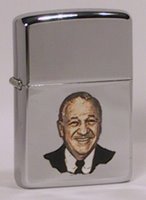
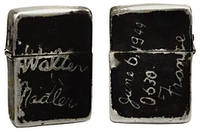
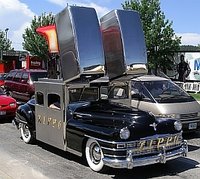 Post war the company resumed selling Zippos to peace time America. To fuel this in 1947, the Zippo car was born.
Post war the company resumed selling Zippos to peace time America. To fuel this in 1947, the Zippo car was born.
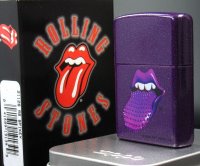

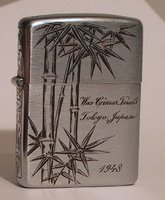
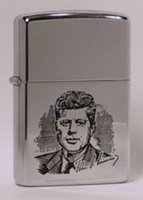 1963 slim Zippo commemorating the European Trip of President Kennedy in June 1963, the same year JFK was assassinated.
1963 slim Zippo commemorating the European Trip of President Kennedy in June 1963, the same year JFK was assassinated.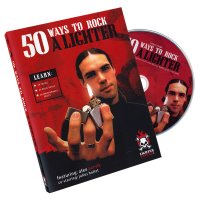 cal repair of a Zippo lighter regardless of the lighter’s age or condition.
cal repair of a Zippo lighter regardless of the lighter’s age or condition.






